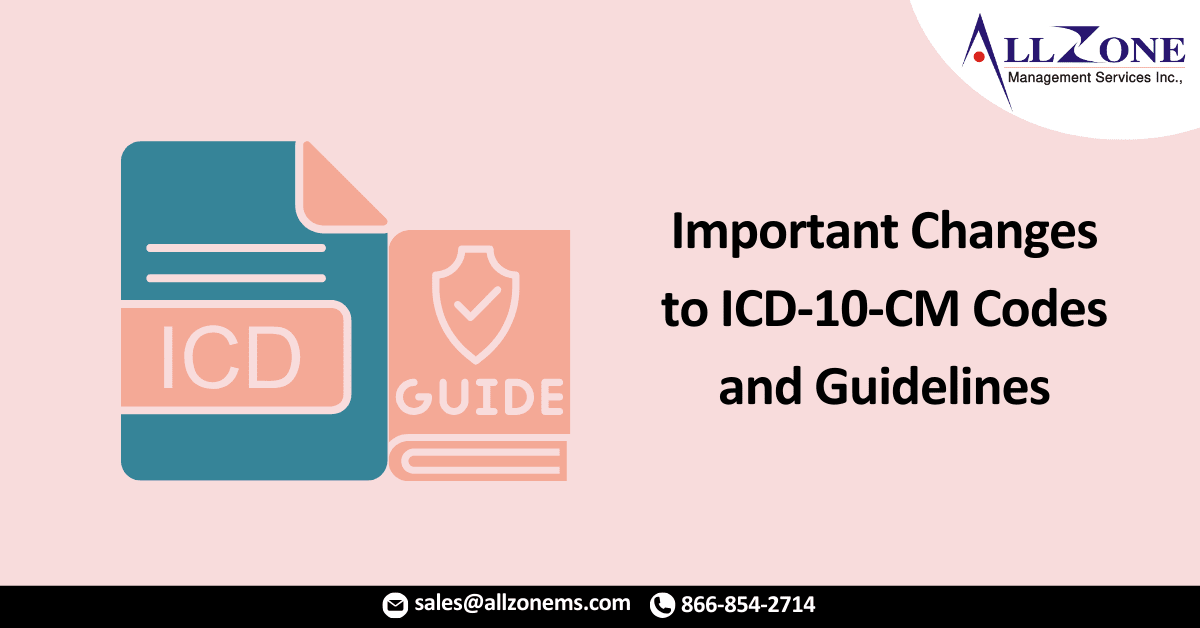The updates to ICD-10-CM and ICD-10-PCS that become effective April 1 were released in mid-January. The updates include 42 new diagnosis codes.
The significant changes to the ICD-10-CM guidelines are the following:
- A.19 – Code Assignment and Clinical Criteria
This section has added a new sentence: “If there is conflicting medical record documentation, query the providers.”
- B.14 – Documentation by Clinicians Other than the Patient’s Provider
Under immunization has been added to the topics that other clinicians may document. Under immunization is also noted to be reported only as a secondary diagnosis.
- B.16 – Documentation of Complications of Care
The update states that the complication must be clinically significant and that the provider does not have to document the word “complication.” The given example is if the condition alters the course of surgery, as documented in the operative report, it would be appropriate to report a complication code. If the documentation is unclear regarding the relationship between the condition and the care or procedure, query the provider.
- C.1.a.2.a – Selection and Sequencing of HIV Codes
The exception to reporting HIV as a principal diagnosis when the patient is admitted for a HIV-related condition is hemolytic-uremic syndrome associated with HIV. Assign D59.31 (hemolytic-uremic syndrome) followed by B20 (AIDS).
- C.1.a.2.d.9 – Hemolytic-Uremic Syndrome with Sepsis
If the reason for admission is hemolytic-uremic syndrome with sepsis, assign D59.31 as the principal diagnosis. Codes for underlying systemic infection and other conditions may be assigned as secondary diagnoses.
- C.5.d – Dementia
The severity and type of dementia is based on the provider’s clinical judgment. If the severity changes during the stay, assign one code for the highest severity level.
- C.15.a.7 – Completed Weeks of Gestation
“Completed” weeks of gestation refers to full weeks. For example, 39 weeks and 6 days is coded as 39 completed weeks.
- C.21.C.17 – Social Determinants of Health
These conditions describe social criteria, conditions, and risk factors that influence a patient’s health status. They should be captured when documented. For example, a patient who expresses concerns with availability and access to food would be reported as Z59.41 (food insecurity). The documentation would support the code. The guideline states that the documentation by a clinician or patient-reported information signed off on by a clinician are used to support the assigned codes.
The new ICD-10-CM codes that become effective April 1 can be viewed in the addenda. These codes cover the following topics:
- Financial abuse, adult, confirmed (Y74.A1);
- Financial abuse, child, confirmed (Y74.A2);
- Financial abuse, adult, suspected (Y76.A1);
- Financial abuse, child, suspected (Y76.A2);
- Perpetrator of assault, spouse/partner (Y07.0-);
- Perpetrator of assault, other family member (Y07.4-);
- Social determinants of health (Z55-Z65)
(Covering topics of health literacy, physical environment, housing, transportation insecurity, social environment, and upbringing); and
- Personal risk factors (Z91.-).
It is important to take the time to educate coders, clinicians, and clinical documentation integrity staff on these recent changes. The education should be clear that these updates do not begin until April 1 for discharges and visits.
For More Information: important changes to icd 10 cm codes and guidelines

